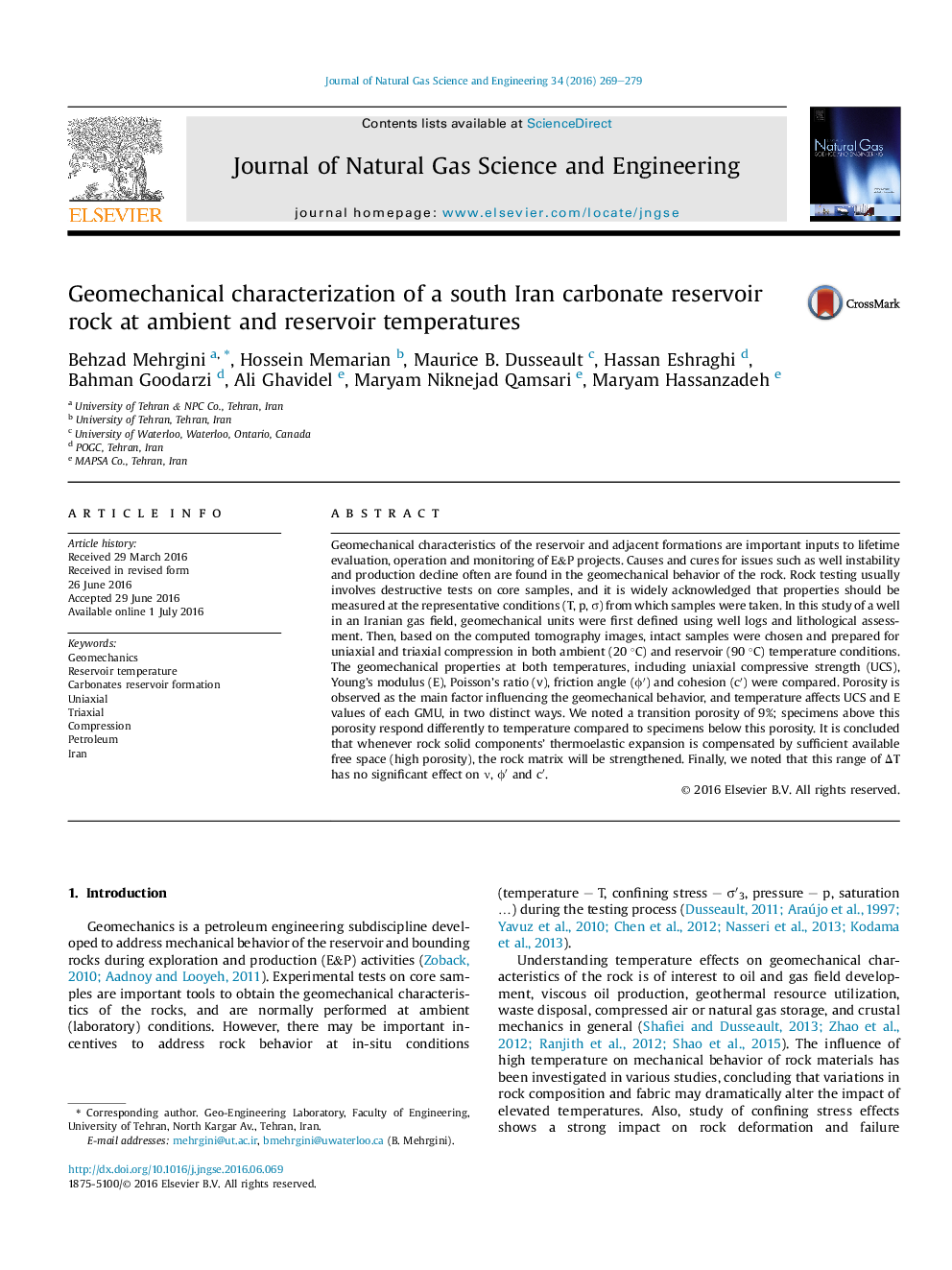| Article ID | Journal | Published Year | Pages | File Type |
|---|---|---|---|---|
| 8128621 | Journal of Natural Gas Science and Engineering | 2016 | 11 Pages |
Abstract
Geomechanical characteristics of the reservoir and adjacent formations are important inputs to lifetime evaluation, operation and monitoring of E&P projects. Causes and cures for issues such as well instability and production decline often are found in the geomechanical behavior of the rock. Rock testing usually involves destructive tests on core samples, and it is widely acknowledged that properties should be measured at the representative conditions (T, p, Ï) from which samples were taken. In this study of a well in an Iranian gas field, geomechanical units were first defined using well logs and lithological assessment. Then, based on the computed tomography images, intact samples were chosen and prepared for uniaxial and triaxial compression in both ambient (20 °C) and reservoir (90 °C) temperature conditions. The geomechanical properties at both temperatures, including uniaxial compressive strength (UCS), Young's modulus (E), Poisson's ratio (v), friction angle (Ïâ²) and cohesion (câ²) were compared. Porosity is observed as the main factor influencing the geomechanical behavior, and temperature affects UCS and E values of each GMU, in two distinct ways. We noted a transition porosity of 9%; specimens above this porosity respond differently to temperature compared to specimens below this porosity. It is concluded that whenever rock solid components' thermoelastic expansion is compensated by sufficient available free space (high porosity), the rock matrix will be strengthened. Finally, we noted that this range of ÎT has no significant effect on ν, Ïâ² and câ².
Related Topics
Physical Sciences and Engineering
Earth and Planetary Sciences
Earth and Planetary Sciences (General)
Authors
Behzad Mehrgini, Hossein Memarian, Maurice B. Dusseault, Hassan Eshraghi, Bahman Goodarzi, Ali Ghavidel, Maryam Niknejad Qamsari, Maryam Hassanzadeh,
